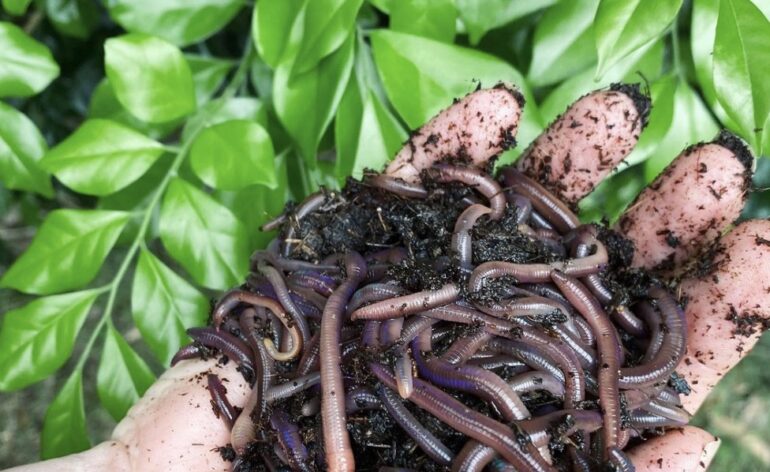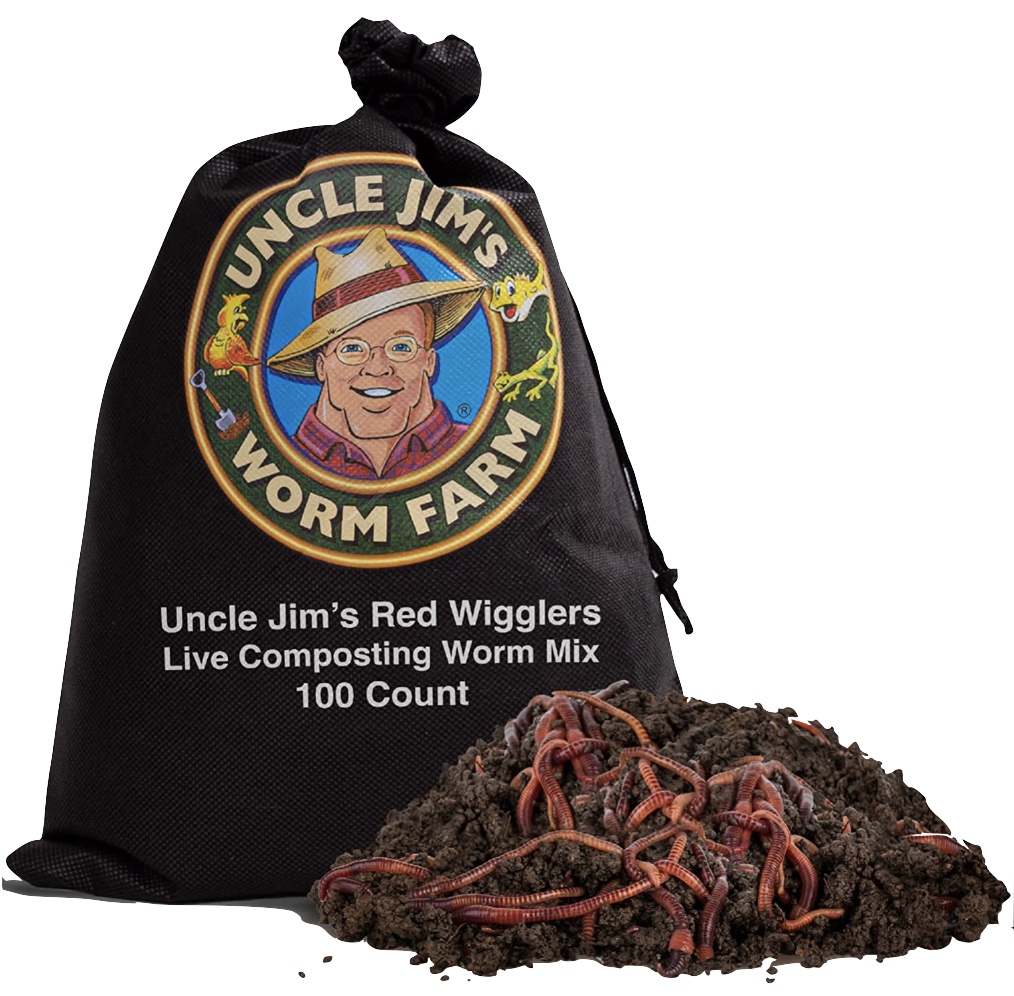Top 5 Worms in Houseplants: What You Need to Know in 2024
We independently evaluate all recommended products and services. If you click on links we provide, we may receive compensation.
If you’re anything like me, you love plants.
And I love plants. I’ve collected so many beautiful plants, from monsteras to aloe plants, that my small home looks like a wild jungle.
But it wasn’t always that way. I once struggled to care for my plants, primarily because I had little access to the critical information I needed to tend to them.
As a result, I knew very little about the types of worms in houseplants—those that promote plant health and those that detract from it. Although I once thought worms were bad for plants, I soon discovered they contribute to soil aeration and nutrient distribution. It turns out I was fighting against nature rather than working with it.
To spare you some serious pain points, I compiled a guide to the types of worms in potted plants, including their uses and potential problems.
However, not all worms are created equal. Here are the top five most common worms in plant soil—and how you can work with them to promote optimal plant health

plantgrowuk / Instagram
Key Takeaways
Worms in houseplants and plant soil, like pot worms, red wrigglers, grub worms, millipedes, and nematodes, play a crucial role in plant health. These worms, naturally occurring in outdoor soil and sometimes in potted plants, aid in breaking down organic matter and enhancing soil quality.
Red wrigglers, in particular, are beneficial for aerating the soil and producing nutrient-rich castings, acting as a natural fertilizer. This guide helps identify and manage these worms, ensuring optimal plant growth and soil health.
Types of Worms
1. Red Wrigglers (Eiseni foestida)
Red wrigglers are commonly known as earthworms.
They’re about an inch to two inches long and red or pink. They have rings around their bodies and are pretty standard in outside soil.
Red wrigglers are very cute, and sometimes they even come in potting soil.
Researchers have found that earthworms benefit all plants because they promote soil aeration, recycle nutrients, and more.
Features of Red Wrigglers
Red wrigglers are typically one to three inches long and are red or pink. They often have small rings around their bodies and might have little bruise-like spots on their tails.
They are standard in potted plants, gardens, and potting soil. They are added to potting soil because they can promote plant health.
Red wrigglers are distinct because they have segmented bodies, so they can become two worms if sliced in half.
Red wrigglers are natural and common in soil. They typically require decaying food and moisture to survive, though they need less water than other worms.
Pros of Red Wrigglers
Red wrigglers contribute to a healthy ecosystem and are suitable for plants in small to moderate numbers.
They help aerate plant soil by moving through the soil and carving tunnels. I like to use them in garden soil and occasionally in potted plants. I often use them outside my vegetable garden, and I’ve noticed they want pumpkins and squash.
It’s important to note that if you see them in your potted plants, they run the risk of dying without decaying food and compost.
Cons of Red Wrigglers
Red wrigglers aren’t usually bad for plants.
However, if they are present in large quantities, they can interfere with the health of other organisms and worm populations.
How to Work With Red Wrigglers
You can use red wrigglers in your outdoor garden, particularly vegetable gardens. You will need to provide compost and decaying matter to feed them.
You can use small quantities of red wrigglers in potted plants or buy soil with red worms already present.
Remember to keep them in small quantities if you plan to use them in a potted plant.
2. Nematodes
View It On Amazon (Beneficial Nematodes HB+SC+SF)
Nematodes are so tiny that you often need a magnifying glass to see them.
Although I’ve never had problems with them before, I’ve seen them cause issues in potted plants.
Nematodes often feed on the plant’s roots, while others may eat or penetrate stalks and leaves.
Features of Nematodes
Nematodes are microscopic, ranging from one-sixteenth of an inch to three millimeters long.
They are typically shaped like worms but don’t have legs like millipedes. There are several different types of nematodes, and most are harmful to plants.
The five major types of nematodes are:
- Plant parasites cause harm to plants.
- Predators, which feed on smaller nematodes.
- Bacterial feeders are most common in agricultural environments.
- Fungal feeders eat fungi and propagate quickly.
- Nematodes that eat anything.
Most nematodes are red or brown, though some can be white or translucent.
You might need a magnifying glass or nematode expert to spot an infestation in your potted plants.
The best way to tell if you have a nematode problem is to look for wilting or yellow leaves, slow-growing or dying plants, and abnormally small yields.
Pros of Nematodes
Of the five types of nematodes, only the bacterial and fungal nematodes benefit your plants.
These nematodes can promote mineralization, allowing plants to access previously inaccessible minerals.
They also eliminate harmful bacterial and fungal colonies. If you’ve worked with potted plants, you know how dangerous a fungal infection can be. Such nematodes can be a great advantage.
Cons of Nematodes
Most types of nematodes are harmful to plants.
They can penetrate plant matter and eat your plants from the inside out. They can also chew on roots or infect plants with harmful bacteria.
Lastly, predator nematodes can kill beneficial types of worms in potted plants, including fungal and bacterial nematodes.
How to Work With Nematodes
You shouldn’t add nematodes to your potted plants or garden soil.
You likely won’t be able to spot a nematode with your eyes, so you’ll need to pay attention to the symptoms of an infestation.
These symptoms include:
- Yellow leaves
- Wilting plants
- Damaged roots
- Stunted growth
- Decaying or dying plants
3. Potworms (Enchytraeids)
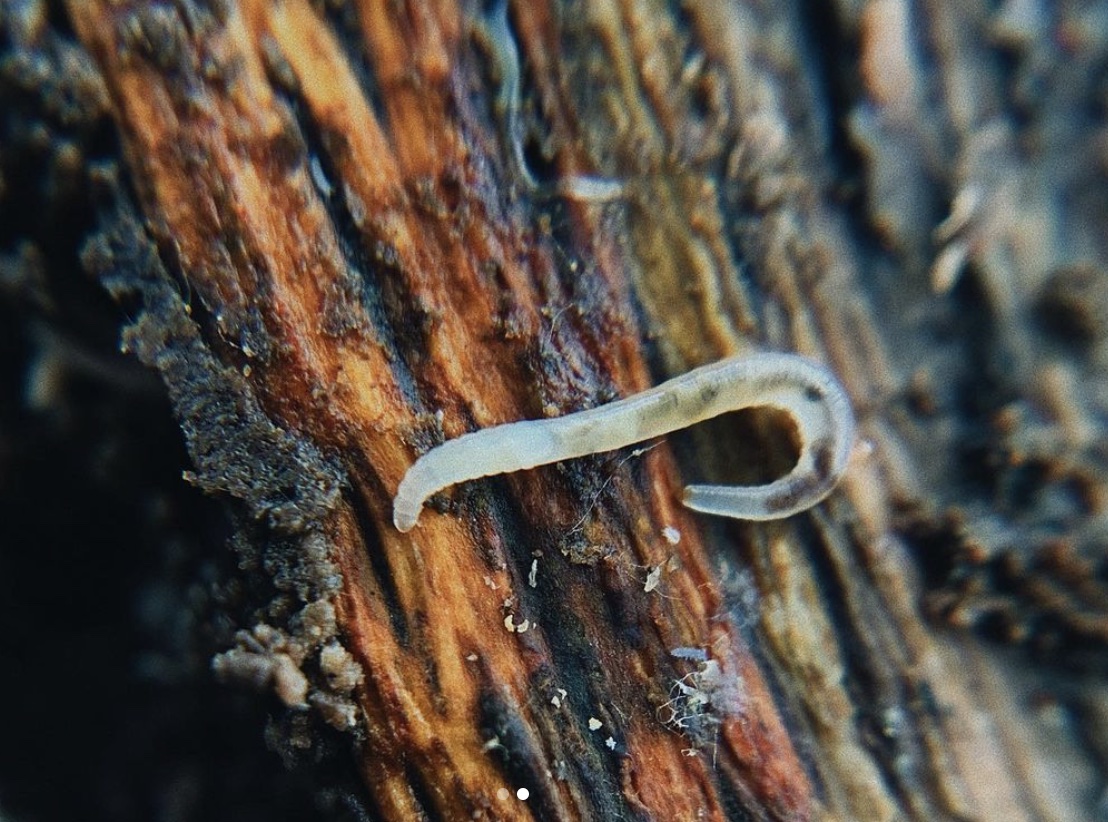
birdlines / Instagram
Potworms are extremely common both in potted plants and in outside soil. You may not have seen them before since they look like tiny, white, translucent strings.
Once I noticed them, I couldn’t stop seeing them.
As it turns out, pot worms are one of the most common types—nearly 2,500 of them per square foot of soil.
Potworms are generally suitable for plants since they promote soil aeration and contribute to fighting harmful bacteria by eating decaying food sources.
However, there are several essential things to remember to use pot worms with your potted plants best and to avoid an infestation.
Features of Potworms
Potworms are the tiny white worms in soil, often found in highly moist and acidic environments. These small, white creatures are especially prevalent in potted plants and gardens where organic materials like coffee grounds or compost are used. They feed on decaying matter, and their presence can indicate specific soil conditions.
Pros of Potworms
Potworms burrow in small tunnels, allowing air and moisture to penetrate the soil and nurture your plants. They aid in decomposition and composting, allowing your plants to benefit from nutrient-rich soil and accessible vitamins and minerals.
They also remove excess rotting and decaying matter from the soil, promoting plant health and removing harmful bacteria.
Cons of Potworms
Potworms are generally suitable for your plants.
However, like most things, they can become a problem in excess.
When I noticed more little white wriggles than usual, I knew I had a problem. My potted orchids had potworm infestations.
An infestation looks like excessive population growth over a short period. Although pot worms aren’t technically bad for your potted plants, they can compete with other beneficial worms for nutrients, crowding out other populations.
If you suspect a potworm infestation, remove the worms and toss them outside.
How to Work With Potworms
As I mentioned, things get much easier when you start working with nature, and you might wonder how to take advantage of these tiny critters.
While pot worms are great for garden plants, they can quickly overwhelm a potted plant, so adding them in isn’t recommended.
If you see a pot worm, leave it there or remove it as you see fit.
4. Grub Worms (Phyllophaga)
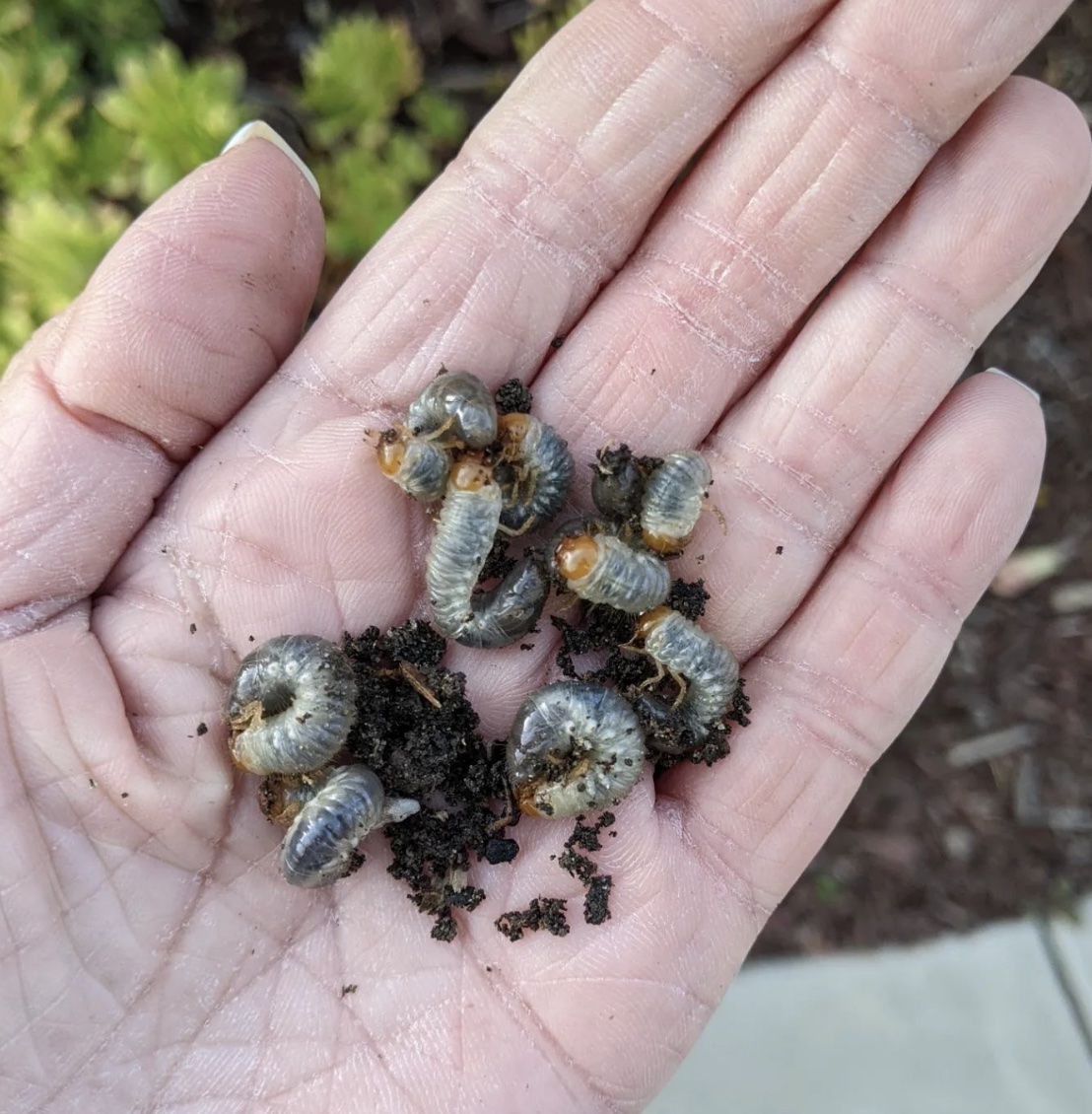
phillygirl.incali / Instagram
Grubworms are the larvae of June bugs and are beetles in the Scarabaeidae family.
Unlike other types of worms, grubworms can be harmful to plant life and are not recommended in any quantity.
The adult beetles tend to lay eggs in the soil, where the larvae feed on plant roots and damage organic matter.
Features of Grub Worms
Grub worms are typically white and translucent. They have a pulpy, round appearance and a brown head. They are often curved in shape and have tiny brown legs.
The June bug looks like a giant brown beetle, flying and emitting a buzzing noise.
Pros of Grub Worms
There are a few benefits to grub worms.
They are primarily considered a pest because they can populate excessively and kill organic matter.
Although grubworms play a role in the natural food chain, they are harmful to potted plants and do not contribute to plant health in any way.
Read on to learn more about the issues associated with grub worms.
Cons of Grub Worms
Grubworms feed on plant roots, killing your plants if left untreated.
They can also carry harmful diseases and bacteria, such as verticillium wilt, which can kill your potted plants.
For this reason, you should eliminate grub worms if you see them anywhere, particularly in potted plants.
Potted plants are more susceptible to problems caused by grubworms because they exist in a contained environment.
How to Work with Grub Worms
If you see grubworms in your potted plant, you should get rid of them.
You can do so by spraying insecticidal spray. You can also replace the soil in your plant’s environment to prevent future infestations.
Some people recommend using a diluted vinegar solution to get rid of grubworms. You can combine red or white vinegar with water and lightly spray your plants.
Lastly, you can remove grub worms with your hands if you see them.
5. Millipedes
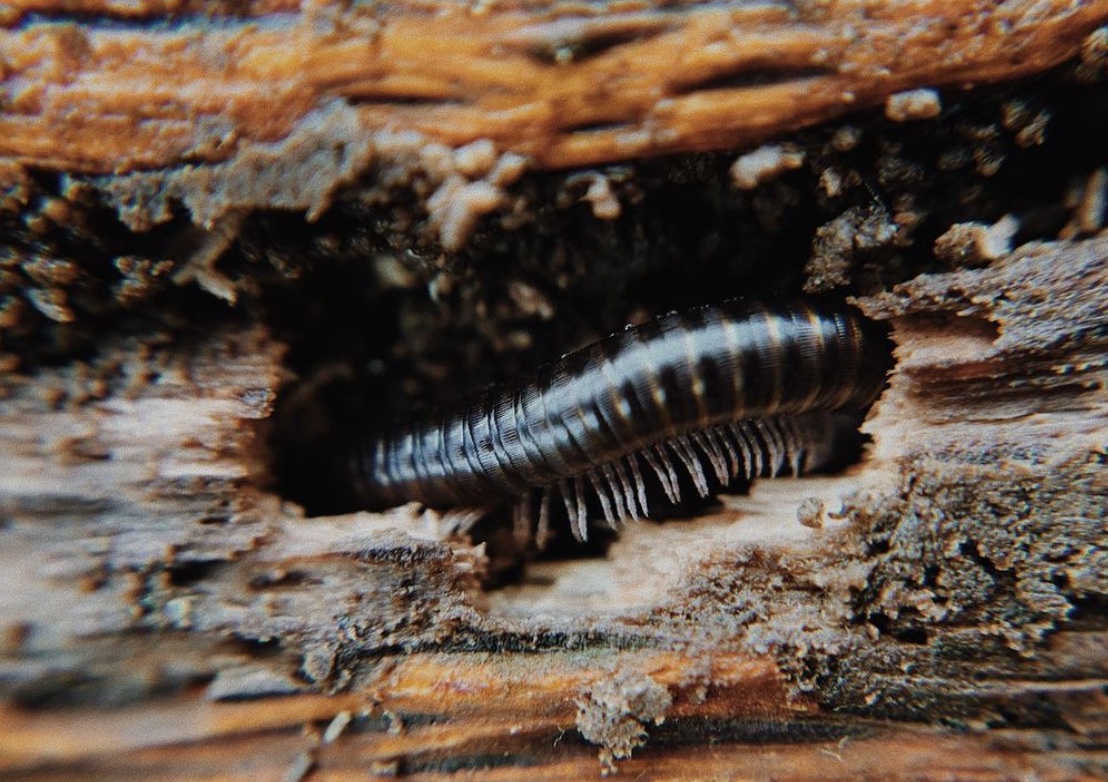
birdlines / Instagram
Millipedes are long, creepy crawlies with hundreds of little legs.
They typically prefer damp conditions and are pretty long—up to six inches in size.
Although millipedes are terrifying, they are suitable for my plants in small amounts.
Features of Millipedes
You can quickly identify a millipede by its long, segmented brown body and hundreds of little legs.
Millipedes have two pairs of legs on each section of their bodies and prefer warm, wet environments.
They are common in gardens, though you may also find them in potted plants. They are most common in compost piles and under mulch since they prefer darkness.
Pros of Millipedes
Millipedes help to turn over the soil and promote the proliferation of nutrients.
They help break down organic matter, clearing harmful bacteria from the soil. They also help recycle nutrients in the ground.
Cons of Millipedes
Millipedes do not cause damage to plants, and they are okay to use in your garden or potted plant. However, remember that they can begin to feed on your plant if they don’t have access to the food they need to survive.
How to Work With Millipedes
Millipedes are perfectly fine in most situations.
If you see millipedes in your outdoor garden, you can leave them alone.
It is typically not recommended to add millipedes to potted plants since they can start feeding on the plant if they don’t have access to food.
If you see a millipede in your plant, you can leave it there unless you notice problems.
Final Verdict
It’s essential to know the different types of worms in potted plants.
Some worms, like millipedes or earthworms, can work to your advantage, while others, like nematodes, are generally harmful.
If you see a new type of worm in your potted plant, consider asking an expert or using an app to identify the worm.
I guarantee you will soon learn to work with these little critters to your advantage.
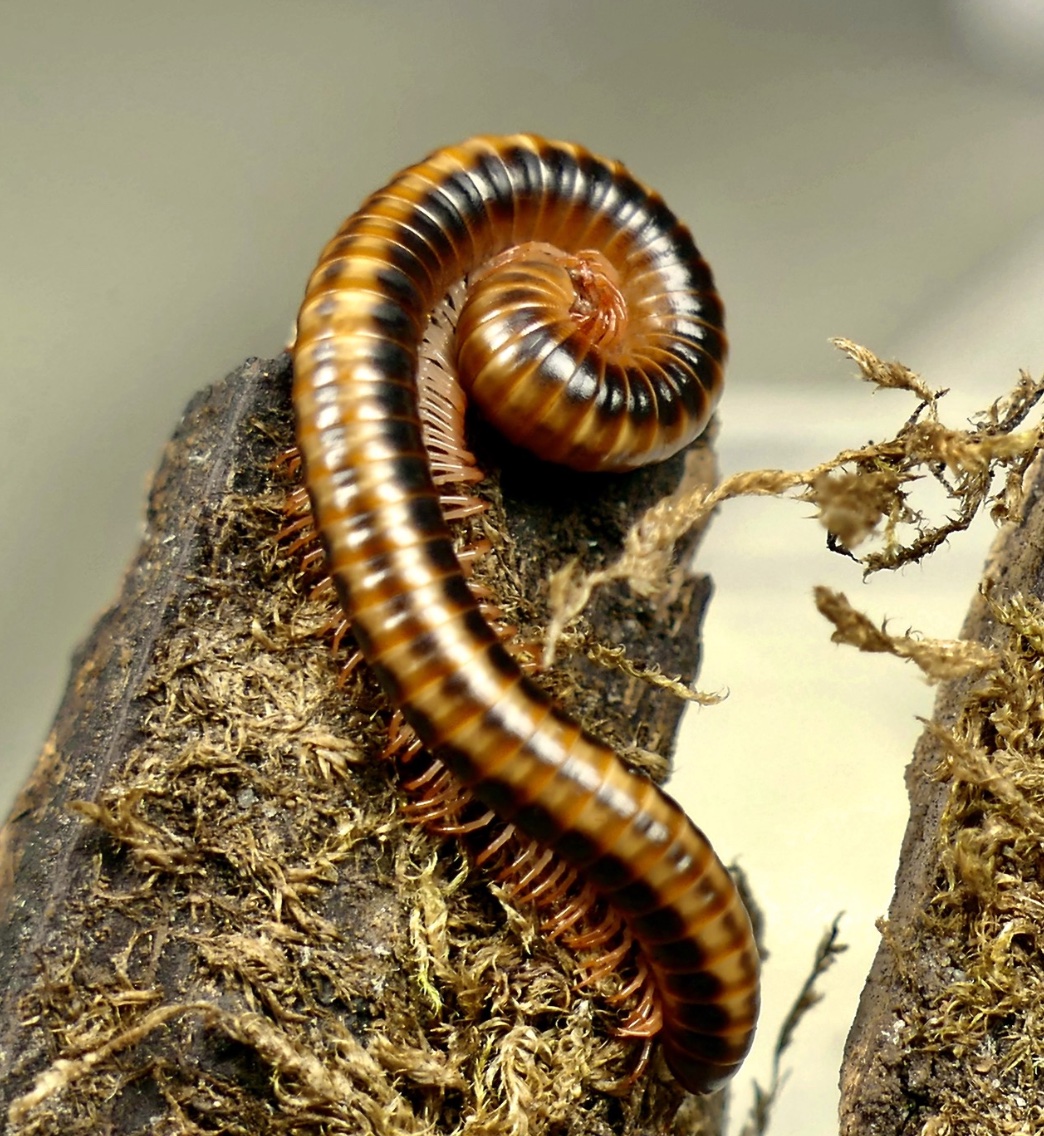
der_insektendealer / Instagram
FAQs
Is it ok to have worms in potted plants?
Some worms are ok to have in potted plants, including earthworms and pot worms. Others, like nematodes and June bugs, are detrimental.
If you’re unsure which type of worm is in your potted plant, you can consult with a gardening expert or bring a sample of the worm to a local nursery for identification.
How do I get rid of worms in my potted plants?
You can use an insecticide to get rid of worms in potted plants.
Consider trying a light mixture of vinegar and water for a more organic solution. You can also remove the worms.
Why are there worms in my potted plants?
Worms can migrate to potted plants by traveling in from outside or emerging from eggs. Sometimes worms are bug larvae. Alternatively, some people add worms to the soil in potted plants.
It’s also possible that the presence of worms in your potted plants is a sign of healthy soil, as worms play a vital role in improving soil structure and nutrient availability.
What kind of soil do worms like?
Different worms like different conditions, but most prefer warm, moist, and slightly acidic soil. Most worms also require a food source, like decaying food or compost.
To create an ideal habitat for worms in your potted plants, it is recommended to use a mixture of organic materials, such as compost, peat moss, and vermiculite, which can provide the necessary warmth, moisture, and acidity required for optimal worm activity.

